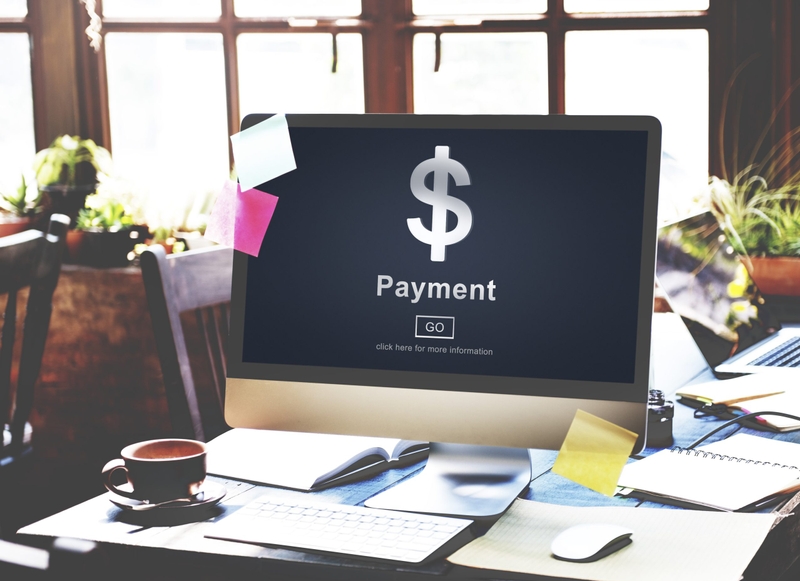

Cross-Border Payments API: How It Works and Benefits
Cross-border payments is now the backbone of international commerce, freelance platforms, SaaS businesses, and global supply chains. The need for fast, cost-efficient, and secure money movement have become vital.
VELLIS NEWS
18 Aug 2025
By Vellis Team
Vellis Team
Automate your expense tracking with our advanced tools. Categorize your expenditures
Related Articles

Vellis News
18 August 2025
What Is a Payment Scheme?
We use digital payments every day: swiping a card, sending money through an app, or paying a bill online. But have you ever wondered what makes these transactions work so seamlessly behind the scenes? The answer lies in payment schemes. Payment schemes are the backbone of modern finance. They’re the invisible structures that allow banks, […]

Vellis News
1 April 2025
Merchant Account vs. Business Bank Account
Numerous banking translations, whether online or in person, cannot be conducted without having a specific account. Many people may not be acquainted with this financial notion, but there is a clear distinction between a merchant account and a business bank account. A merchant account is a type of a bank account but rather acts as an intermediary between the customer’s payment and the business’s bank account. On the other hand, a business bank account is a traditional bank account mainly used for conducting a company’s finances. It’s of utmost importance to understand both for managing business finances, conducting payment processing, handling payrolls, and many others.

Vellis News
23 June 2025
What is the Medicare Prescription Payment Plan?
Managing the rising cost of prescription drugs can be overwhelming, especially for older adults living on a fixed income. That’s where the new Medicare Prescription Payment Plan steps in – designed to ease the financial burden of high-cost medications by offering beneficiaries the option to pay for their prescriptions over time.
Application Programming Interfaces (APIs) are revolutionizing the way money moves across borders. They enable real-time, seamless communication between financial systems, replacing the traditionally slow and manual processes associated with global wire transfers.
This article unpacks what a Cross-Border Payments API is, how it works, and why it’s a game-changer for both businesses and developers.
What Is a Cross-Border Payments API?
A Cross-Border Payments API is essentially a software interface that allows financial platforms, apps, and services to send, receive, convert, and reconcile international payments through automated processes. Instead of manually initiating a transfer and waiting days for confirmation, APIs allow these steps to happen in real time, often in just minutes.
Fintech companies, global e-commerce platforms, banks, and B2B service providers use these APIs to streamline money movement across borders. Think of it as a digital bridge that connects banks and financial institutions worldwide without the human delays or paperwork.
How Cross-Border Payment APIs Work
Let’s break down a simplified transaction flow to better understand how a cross-border payments API functions:
- Request Initiation: A user or system triggers a payment; say, sending $1,000 from the U.S. to Japan.
- Currency Conversion: The API connects to real-time exchange rate providers and converts USD to JPY as needed.
- Routing: The payment is routed through correspondent banking networks or fintech channels.
- Transfer & Confirmation: Once the payment is processed, confirmation is sent back to the sender, and the funds are credited to the recipient’s account.
These processes typically rely on standard web protocols like REST, HTTPS, and data formats such as JSON. Many APIs now also support real-time status updates and notifications to keep both sender and recipient in the loop.
Core Features of a Cross-Border Payment API
Here are the key features that make these APIs so powerful:
- Multi-currency support: Handle conversions between dozens of global currencies.
- Real-time exchange rates: Access to up-to-date currency data reduces slippage and improves cost transparency.
- Transaction status tracking: Users get live updates at every step.
- Error handling and compliance checks: Built-in validations reduce failure rates and ensure regulatory adherence.
- Automated reconciliation: Helps accounting systems match transactions efficiently.
These capabilities drastically reduce the time, cost, and human effort needed to manage cross-border transfers.
Benefits for Businesses and Fintech Platforms
For companies operating internationally, the advantages of cross-border payments API integration are massive:
Operational efficiency
Automates repetitive tasks and eliminates the need for manual data entry.
Lower transaction fees
Some APIs optimize routing to use the most cost-effective channels.
Better customer experience
Faster settlement times mean happier clients and partners.
Scalability
One API integration can allow you to transact in multiple regions and currencies without rebuilding your backend.
This is especially useful for startups scaling globally or enterprises managing large volumes of international transactions.
Use Cases in Different Industries
These APIs aren’t limited to just one sector. Here’s how they’re being used:
- E-commerce: Brands accept foreign payments and pay overseas suppliers directly at checkout.
- Freelance platforms: APIs power instant payments to contractors in different countries and currencies.
- SaaS providers: Bill clients in their local currency while consolidating revenue in your home base.
- Financial services: APIs fuel embedded finance services, allowing apps to offer integrated local & international payment services without becoming a full bank.
Security and Compliance Considerations
Naturally, when dealing with money and sensitive data, security is a priority. Cross-border payment APIs often use:
- End-to-end encryption: Ensures data remains protected during transmission.
- Tokenization: Masks sensitive information like account or card numbers.
- Secure authentication: OAuth tokens and API keys verify who’s calling the system.
- Regulatory compliance: Top APIs adhere to AML (Anti-Money Laundering), KYC (Know Your Customer), and PSD2 (Payment Services Directive) regulations.
These measures make APIs safer than traditional methods in many cases. You might wonder, are mobile payment apps safe in comparison? While many mobile apps include strong protections, APIs give developers more control over integration, data handling, and monitoring, which is critical in enterprise use cases.
Comparing Payment API Providers
Choosing the right provider depends on your needs. Some factors to compare include:
- Coverage: How many countries and currencies are supported?
- Speed: How fast are settlements typically processed?
- Ease of integration: Is the documentation clear and developer-friendly?
- Support: Does the provider offer service-level agreements (SLAs) and human support?
Popular platforms like Wise Platform, Currencycloud, and Payoneer for Business are known for robust APIs, great coverage, and good developer tools.
Integration Process and Developer Considerations
Integrating a cross-border payments API usually follows this flow:
- Access API keys from the provider.
- Configure endpoints based on the services needed (e.g., create payment, check status, convert currency).
- Perform sandbox testing to simulate real transactions without using actual money.
- Go live after completing security audits and compliance requirements.
Most providers offer SDKs, webhooks, and developer sandboxes to simplify this process. Still, developers should pay attention to API versioning, security patches, and fallback mechanisms for downtime.
Challenges and Limitations
Despite their advantages, these APIs do come with limitations:
- Regulatory differences: Each country has its own rules for cross-border payments, affecting approval and processing.
- Currency volatility: Exchange rates can fluctuate, creating risk if not locked in.
- Downtime risks: If the provider’s system goes offline, payments can be delayed.
Businesses should always prepare a contingency plan or backup solution, like a manual fallback or a secondary provider.
Future of Cross-Border Payment APIs
Looking ahead, expect exciting innovations in the space:
- Blockchain-based APIs: Will allow near-instant global transfers with lower fees.
- AI-driven fraud detection: Identifies anomalies in payment behavior in real-time.
- Open banking integrations: Make it easier to initiate payments from bank accounts across jurisdictions.
We may even see closer alignment between APIs and account infrastructure, reducing reliance on traditional banking methods like the Nostro account vs vostro account setup. These improvements will give users and developers more control over how money moves across borders, in line with the growing demand for transparency.
As global trade and freelancing continue to rise, so does the importance of reliable cross-border payments API integration. Now is the time to explore the tools and providers that can future-proof your global payment infrastructure.
Frequently Asked Questions (FAQs)
What is a Cross-Border Payments API used for?
Used to automate and simplify international money transfers between systems or businesses.
Do I need technical knowledge to use a Cross-Border Payment API?
Not directly – developers handle integration, but platform users benefit from the features without coding.
Are APIs secure for handling financial transactions?
Yes, when built and integrated properly using secure protocols and access controls.
How fast are cross-border transfers using APIs?
Transfers can be near-instant or take 1–3 days, depending on currency pairs and provider.
Can small businesses use these APIs?
Yes, many providers offer scalable options for startups, SMEs, and enterprises.
References
Uniteller. (n.d.). How APIs are powering cross‑border payments. UniTeller Blog. Retrieved July 27, 2025, from https://uniteller.com/ut-blog/cross-border-payments-api-overview
Investopedia. (2015, May 18). Nostro account vs. vostro account: Understanding the difference. Retrieved from https://www.investopedia.com/ask/answers/051815/what-difference-between-nostro-and-vostro-account.asp Bank for International Settlements. (2025). Interlinking fast payment systems to enhance cross‑border payments (CPMI Brief No. 7). Retrieved from https://www.bis.org/cpmi/publ/brief7.pdf

Ready to transform your financial management?
Sign up with Vellis today and unlock the full potential of your finances.
Related Articles

Vellis News
19 August 2025
What is Open Banking: Definition, How It Works, and Risks
Open banking is a financial model where banks securely share customer data with approved third-party providers through APIs (application programming interfaces). This setup gives consumers more control over their financial information, while encouraging greater transparency and innovation across the industry.

Vellis News
27 October 2025
Dual Banking System: Meaning, History, Pros and Cons
A dual banking system is a financial structure that allows both state-chartered and federally chartered banks to operate under separate regulatory frameworks. Originating in the United States, it has shaped global financial models by balancing regional flexibility with national oversight.

Vellis News
28 July 2025
How to Send Money Without a Bank Account?
Not everyone has access to a traditional bank account, but that doesn’t mean they’re excluded from financial transactions. It’s entirely possible to send money without a bank account safely and efficiently.
We use cookies to improve your experience and ensure our website functions properly. You can manage your preferences below. For more information, please refer to our Privacy Policy.
© 2025 Vellis Inc.Vellis Inc. is authorized as a Money Services Business by FINTRAC (Financial Transactions and Reports Analysis Centre of Canada) number M24204235. Vellis Inc. is a company registered in Canada, number 1000610768, headquartered at 30 Eglinton Avenue West, Mississauga, Ontario L5R3E7, Canada.

